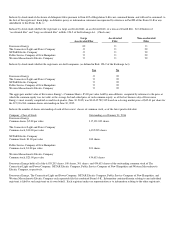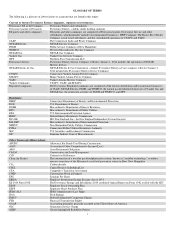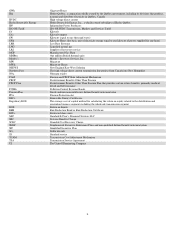Eversource 2015 Annual Report Download - page 19
Download and view the complete annual report
Please find page 19 of the 2015 Eversource annual report below. You can navigate through the pages in the report by either clicking on the pages listed below, or by using the keyword search tool below to find specific information within the annual report.
7
ELECTRIC DISTRIBUTION – NEW HAMPSHIRE
PUBLIC SERVICE COMPANY OF NEW HAMPSHIRE
PSNH’s distribution business consists primarily of the generation, delivery and sale of electricity to its residential, commercial and industrial
customers. As of December 31, 2015, PSNH furnished retail franchise electric service to approximately 503,000 retail customers in 211 cities and
towns in New Hampshire, covering an area of approximately 5,630 square miles. PSNH currently owns and operates approximately 1,200 MW of
primarily coal-, natural gas-, and oil-fired electricity generation plants. PSNH’s distribution business includes the activities of its generation
business.
The Clean Air Project, a wet flue gas desulphurization system (Scrubber), was constructed and placed in service by PSNH at its Merrimack Station in
2011. The Scrubber reduces emissions of SO2 and mercury from Merrimack Station by over 90 percent, which is well in excess of state and federal
requirements. PSNH is permitted to recover prudent Scrubber costs through its default energy service rates under New Hampshire law. Effective
January 1, 2016, PSNH is recovering all Scrubber costs in rates charged to customers. For further information, see “Regulatory Developments and
Rate Matters – New Hampshire – Clean Air Project Prudence Proceeding” in the accompanying Item 7, Management’s Discussion and Analysis of
Financial Condition and Results of Operations.
The following table shows the sources of PSNH’s 2015 electric franchise retail revenues based on categories of customers:
PSNH
(Thousands of Dollars, except percentages) 2015
% of Total
Residential $
505,806 54
Commercial 312,918 34
Industrial 76,914 8
Other 35,103 4
Total Retail Electric Revenues $ 930,741 100%
A summary of PSNH’s retail electric GWh sales volumes and percentage changes for 2015, as compared to 2014, is as follows:
2015 2014
Percentage
Change
Residential 3,195
3,172 0.7 %
Commercial 3,365
3,332 1.0 %
Industrial 1,367
1,382 (1.1)%
Total 7,927
7,886 0.5 %
Rates
PSNH is subject to regulation by the NHPUC, which, among other things, has jurisdiction over rates, certain dispositions of property and plant,
mergers and consolidations, issuances of securities, standards of service and construction and operation of facilities. New Hampshire utilities are
entitled under state law to charge rates that are sufficient to allow them an opportunity to recover their reasonable operating and capital costs, in order
to attract needed capital and maintain their financial integrity, while also protecting relevant public interests.
Under New Hampshire law, all of PSNH’s customers are entitled to choose competitive energy suppliers, with PSNH providing default energy
service under its ES rate for those customers who do not choose a competitive energy supplier. At the end of 2015, approximately 21 percent of all
of PSNH’s customers (approximately 53 percent of load) were taking service from competitive energy suppliers, compared to 21 percent of
customers (approximately 46 percent of load) at the end of 2014.
The rates established by the NHPUC for PSNH are comprised of the following:
• A default energy service charge which recovers energy-related costs incurred as a result of providing electric generation service supply to
all customers that have not migrated to competitive energy suppliers. These charges recover the costs of PSNH’s generation, as well as
purchased power, and include an allowed ROE of 9.81 percent.
• A distribution charge, which includes an energy and/or demand-based charge to recover costs related to the maintenance and operation of
PSNH’s infrastructure to deliver power to its destination, as well as power restoration and service costs. This includes a customer charge to
collect the cost of providing service to a customer; such as the installation, maintenance, reading and replacement of meters and
maintaining accounts and records.
• A transmission charge that recovers the cost of transporting electricity over high voltage lines from generating plants to substations,
including costs allocated by ISO-NE to maintain the wholesale electric market.
• A stranded cost recovery charge (SCRC), which allows PSNH to recover its stranded costs, including above-market expenses incurred
under mandated power purchase obligations and other long-term investments and obligations.
























